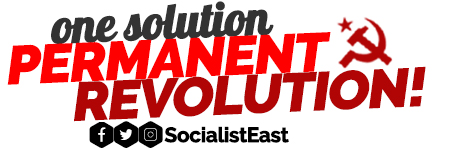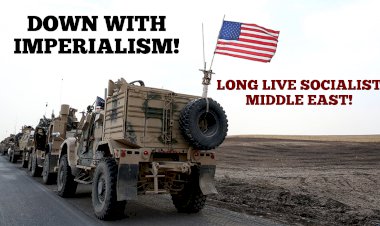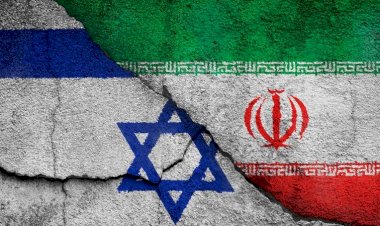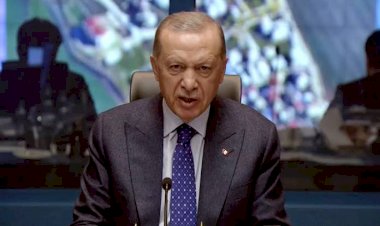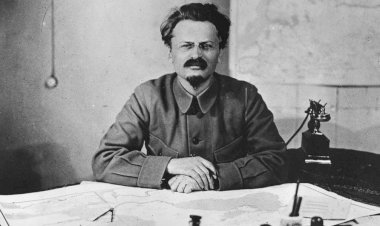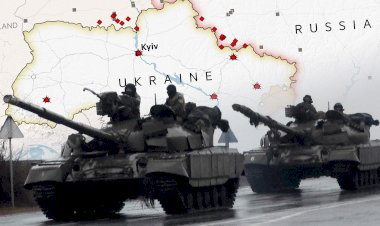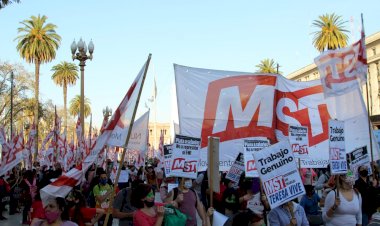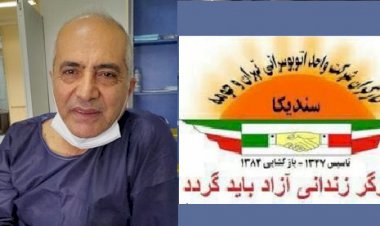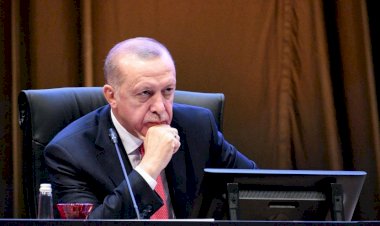World War III and the U.S. Elections
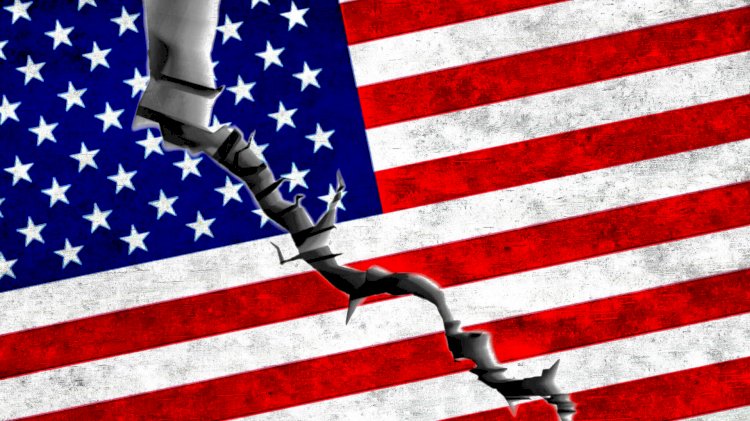
In our planet dominated by capitalism, things are in turmoil. As the U.S., the hegemonic power of the world, declines in power and loses its leading position, regional powers who are lower down in the imperialist hierarchy are increasingly clashing. Whenever a power feels strong enough and sees an opportunity, it tries to exert control over areas it has set its sights on. This is precisely what we see with Russia in Ukraine, Syria, and Africa; Turkey in Syria, Iraq, Libya, and Somalia; Iran in Yemen, Syria, Lebanon, and Iraq; Israel in Gaza; and Azerbaijan in Karabakh. In this environment, wars and internal conflicts are spreading and intensifying.
China’s historic leaps toward becoming a superpower in response to the dramatic decline of the U.S. as the single superpower since 1990 are shaking the global imperialist status quo. As militarism, economic protectionism, and nationalism rise, the far-right gains strength in the West led by the U.S., “land of freedom” . As the imperialist capitalist system rapidly moves from crisis to crisis, our planet is giving SOS signals. Record-breaking temperatures every year point to the potentially far more devastating impacts of climate change than initially predicted. Amid the deepening economic, geopolitical, and ecological crisis, there are also examples of rising class struggles. Just this past summer, we witnessed the sharpest forms of class struggle in Bangladesh. In protests led by the student movement, where over 750 people were killed, the dictator Sheikh Hasina was forced to flee the country.
As seen in the mass uprisings, which last peaked in 2019, toppling a dictator alone is not enough for real social change. Advancing class struggle through a socialist revolutionary program and a corresponding revolutionary organization is essential for addressing fundamental social issues. Even if the class movement does not progress to this extent, the shift toward socialist ideas among the masses could create a significant impact globally and be a development of historical importance. For this reason, it is necessary to closely monitor countries like Bangladesh, where class struggle is intensifying.
Has World War III Started?
Many have already declared the start of World War III. Those who consider the Ukraine War as its beginning believe we are already two and a half years into it. According to these proponents, World War II didn’t start in 1939 either. Japan invaded Manchuria in 1932, and the Spanish Civil War erupted in 1936. By this logic, the ongoing wars in Ukraine and Palestine suggest that the third great fire has already begun. If one stretches the historical process arbitrarily, one could even claim that World War II didn’t actually begin on September 1, 1939, or that World War I never truly ended. However, none of these are well-founded assessments.
To claim that the World War III started, you need some criteria. A world war means that major powers are engaged in an all-out global war. Today, calling the war in Ukraine or the massacre in Gaza and ongoing low-intensity conflicts in the region the start of a world war would be unrealistic. Imperialist wars and occupations have continued uninterrupted across various regions of the world since the 20th century, but calling this World War III would be a detachment from reality.
For us to talk about a world war today, both China and the U.S. would need to be directly involved in the conflict. During situations where the U.S. occupied Vietnam and the USSR occupied Afghanistan, the rival centers intervened in conflicts through their proxies but never considered engaging directly. The situation in Ukraine today is no different. In Palestine, neither Russia nor China are directly intervening. China's reach does not yet extend directly to, say, Palestine or any other part of the Middle East. Militarily, China’s muscle-flexing will primarily take place in the Asia-Pacific region due to the current balance of power. Russia, despite having certain issues with Israel, maintains some alliances with them. In short, China and Russia are not in a position to engage in war in the Middle East, even through their proxies, let alone directly.
Although there is no world war, the risk of a regional war in the Middle East is a reality. The far-right government in Israel wants to expand the war towards Lebanon and Iran. But so far, Netanyahu’s ambitions have been restrained not only by the U.S. but also by a significant portion of Israel’s ruling class. It was anticipated that Iran would retaliate after the assassination of Haniyeh, sparking a regional war, but the Mullah regime in Iran has so far avoided such an attack. Iran prefers to maintain a low-intensity level of conflict through its proxy forces, knowing it would be left alone against Israel-U.S. in a regional war. In other words, even a regional war is hard to undertake, let alone a world war. Given that all sides have much to lose, it’s not easy to let wars spiral out of control.
The nuclear deterrent, which keeps World War III off the agenda, continues to hold sway. Both world wars erupted due to Germany (and later Japan) challenging the imperialist hierarchy. However, after World War II, when the USSR and the U.S. remained as the two superpowers, they never dared to risk a third world war. The reason was simple: the nuclear apocalypse scenario was extremely terrifying. Therefore, the rivalry between the great powers played out in the form of the Cold War.
Today, the global imperialist hierarchy is again being challenged by an emerging and rapidly rising power: China. Thus, in terms of China’s rapid rise shaking the imperialist status quo, the material foundations for a new world war continue to develop. However, just as during the Cold War, it will be difficult for the parties to risk a nuclear catastrophe today. Of course, when it comes to capitalist barbarism, no guarantees can be given, but for now, we cannot speak of a crisis deep enough to bring such madness to the agenda. At this stage of historical development, China wants to continue its advances, while the U.S. seeks to calm domestic affairs, surround China militarily and economically, and bring it into its sphere of influence.
The ruling class of the U.S. will have to pursue similar strategies with Kamala Harris or Trump. The era in which developing countries adhered to free-market rules written by the West and were dominated by the U.S. is over. Trade wars and protectionism are the contemporary talks now.
Meanwhile, comprehensive and costly efforts to keep Ukraine on the battlefield against Russia are yielding little progress. The Kursk offensive carried out by the Ukrainian army within Russia appears to have only broadened the front line, which actually works against Ukraine. Putin is more convinced than ever that he is moving towards victory.
To halt its historical decline, Western imperialism led by the U.S. must encircle China both economically and militarily. Within the U.S. ruling class, there is a division over how economic and political capital can be more effectively directed against China. Meanwhile, China continues to grow in economic power and global influence despite military encirclement efforts led by the U.S.
Trump ord Harris, How Much Does the U.S. Policy Change?
After Biden's withdrawal, the presidential race has become even more thrilling in the U.S. However, thinking that significant differences between these two candidates are greater than they are from the perspective of monopolistic capital would be misleading. We should not overlook the direct effects of this exaggeration on the class struggle. Harris’s supporters have flooded social media with posts portraying her as a superwoman defending African Americans, women, the U.S. Constitution, and the Statue of Liberty in various ways (Rall, “The Kamala Harris Cult Needs a Personality,” Wall Street Journal). The “leftists,” who are less enthusiastic about Harris’s candidacy but skilled at creating confusion, are equally numerous. U.S. “progressives” who view Trump’s presidency as a “victory for fascism” and argue that the Democratic Party and Harris should be supported for the sake of democracy are also quite powerful. This “lesser evil” approach, popular in Turkey as well under terms like “strategic voting,” sidelines the anti-establishment left by attaching it to the Democratic Party. Indeed, the analogy of the Democratic Party being “the graveyard of the socialist left” has become widespread, as historical experience validates this notion. The main axis of the U.S. socialist left, which aligned with Roosevelt’s New Deal in the 1930s, has clung to the Democratic Party from 1968 through the Obama-Bernie era, ultimately misleading the masses.
While this historical perspective remains evident, the endless cycle of choosing the “lesser evil” is constantly updated with “urgent matters of the moment.” Today’s urgency is to prevent Trump from becoming president. The most prominent figures of the U.S. left, Bernie Sanders and Alexandria Ocasio-Cortez, have been fervently campaigning for Biden-Harris. The publication of the Democratic Socialists of America (DSA), Jacobin, even praised Harris, who they describe as “social”, in her choice of Tim Walz as vice president (Meyer, “The Left Needs a Real Strategy for a Harris Presidency,” Jacobin). Supposedly, Tim Walz is the candidate of the working class! Of course, Walz is, of course, not the candidate of the working class, but a clever choice as a white politician with a rural background who appeals to workers. After all, they need to balance Trump’s clear advantage among impoverished white rural workers! Coincidentally, Trump’s vice president, J.D. Vance, also comes from the same social background and criticizes Wall Street barons while highlighting the impoverishment of this working-class demographic. What he says is quite striking and worth paying attention to.
J.D. Vance accused Biden of ruining American industry with neoliberal trade deals and supporting the “horrific invasion of Iraq” in 2003. “Jobs were sent overseas, and our children were sent to war. But no more. We will rebuild factories, and we’ll employ people to produce real products for American families, made by American hands” (Al Jazeera, “JD Vance Hails Trump, Outlines Populist Vision as He Accepts,” July 18, 2024). Right-wing identity politics and the slogan “Make America Great Again” are thus merged with the emotions of the average American family, who are suffering on a class level. Trump and his demagogue partner create an anti-establishment image for themselves with such rhetoric. Because the Democratic Party had previously sidelined left-populist Bernie Sanders, who appealed to the working class, the vast anti-establishment domain was left entirely to Trump. Therefore, even if the Trump-Vance ticket loses, Trumpism will persist as right-wing populism.
While J.D. Vance may have left behind his days of poverty long ago, supported by millionaire businesspeople and now a millionaire himself, his rhetoric should not be dismissed as mere electoral trickery. Vance’s statements also reveal shared concerns within the U.S. ruling class regarding China. Additionally, it’s worth noting Trump’s accusations against Democrats for either starting or failing to prevent wars. In this sense, one might argue that the Trump-Vance leadership has steered the traditionally aggressive Republican Party, represented by figures like Ronald Reagan and the Bushes, away from a neo-conservative stance towards right-wing populism. Trump and his team’s efforts to portray the Democratic Party as the party of globalist elites and the establishment, while presenting themselves as allies of the average American worker, have not gone unnoticed. This approach allows them to take a right-wing identity stance in reaction to the identity politics championed by the Democratic Party, while also appealing to workers of all races. Trump brands the identity politics of the Democratic Party as Marxism or radical leftism, trying to cultivate a kind of right-wing identity politics among the broad groups in the U.S. who are disturbed by the powerful woke movement in the media and cultural industries. Opposition to immigration, emphasis on family, and calls for a return to America’s traditional values make up Trump’s campaign rhetoric. The Democratic Party’s “progressive” chorus, which sees a fascist agenda that excludes LGBT communities, upholds white supremacy, and supports male dominance in these statements, lashes out against them. Ultimately, given the polarization within American society along cultural fault lines, Trump, no matter how absurd he may sound, continues to attract a solid voter base.
Competition with China, But How?
“We will work together to protect the wages of American workers and prevent the Chinese Communist Party from building its middle class on the backs of American citizens. We will also ensure that our allies share the burden of securing world peace with us.” (Cheng, JD Vance blames U.S. wage losses on China’s efforts to build its middle class, CNBCE) Setting aside the rhetoric of protecting workers in J.D. Vance's statement, the emphasis on targeting China stands out. Joe Biden continued the policies Trump initiated to rebuild the competitiveness of U.S.-based industries and begin an economic war against China. The difference here lies in the methods Trump wishes to employ. While Trump’s push for protectionist measures and increased import tariffs unsettles certain U.S. capitalist circles, his promise to lower general income taxes makes him quite appealing in capitalist environments. Despite his occasional criticisms of tech giants, significant funds from Silicon Valley have reportedly flowed into the Trump-Vance campaign. Among these tech barons is none other than Elon Musk. Furthermore, influential figures like Steve Schwarzman, CEO of the Israel-affiliated Blackstone group, David Sacks from Silicon Valley, and prominent tech investor Peter Thiel are all backing Trump’s campaign.
So, in what is shaping up to be the most expensive election in history (about $10 billion), who is financing Kamala Harris and Waltz? When you dig into these issues, the argument to “support Democrat Kamala Harris against fascist Trump” falls apart. Harris is the symbol of the Democratic establishment, which is controlled by billionaires. Sure, some super-billionaires are investing in Trump, but the Democratic Party and Kamala Harris have even deeper ties to Wall Street elites and Silicon Valley tech barons. The majority of the U.S. bourgeoisie supports Harris. Biden’s withdrawal from the presidential race was the result of pressure from Wall Street elites, who declared they would not fund the Democratic Party’s campaign otherwise (Khalaf, Why Wall Street Picked Kamala Harris, Financial Times). Biden, who said, “Only God could convince me to step down,” couldn’t resist this pressure from big financiers. “Money Talks,” the golden rule of capitalism, is most evident in U.S. politics. Given these dynamics, it is pointless to engage in lengthy explanations about the absurdity of supporting Obama, Biden, or Harris in the name of leftism.
So, what drives the U.S. ruling class to choose between Harris and Trump? The dominant tendency within the U.S. ruling class leans towards supporting Harris over Trump, who is seen as a threat to the system’s stability. The established system in the U.S. limits the power of the elected president. Institutions such as the Pentagon, CIA, Congress, Senate, financial bureaucracy, judiciary, and other federal government bodies serve as checks and balances against the president. Furthermore, in the two-party U.S. political landscape, capitalist financing of candidates is an open and legal form of bribery. So, it is almost impossible for an outsider to be elected president or, if elected, to act freely. On the other hand, Trump, a billionaire himself, is perceived as a threat, not to the capitalist system but to the traditional American system (Sonnenfeld, The Coming MAGA Assault on Capitalism, Time). Trump, a person who shows little respect for the rule of law, seeks to control the judiciary and even desires to control the central bank. He clashes with the Pentagon and CIA while trying to seize media owned by billionaire business circles through threats. Trump’s bad habit of using his authority to act against capitalist groups he personally dislikes or threaten his opponents also alienates large sections of the U.S. ruling class, pushing them closer to Harris to preserve the system’s institutional framework. Many also view Trump’s divisive, polarizing, and inflammatory rhetoric as a threat to the future of the system.
Beyond this institutional and historical perspective, there is an important faction within the capitalist class whose current economic interests are threatened by Trump’s protectionist economic policies. Import-oriented capitalists are concerned that Trump’s determination to impose high tariffs will strengthen trade wars and isolationism. The notion that a smoothly functioning global economy better serves U.S. interests reflects the concerns of those worried about the impact of Trump’s tariffs on their profits from free trade. It’s clear that Vance’s populist speeches attacking globalists don’t sit well with this group. Many are also alarmed by the prospect of isolationism spilling over into U.S. foreign policy, potentially undermining America’s position as a global power broker. Another issue is Trump’s promise to deport immigrants, which could disrupt the labor supply and raise labor costs. The U.S. economy needs cheap labor, and building walls along borders or establishing migrant camps could tarnish the U.S.’s global image and hegemony. For these reasons, much of U.S. monopolistic capital supports Harris over Trump.
Turning to the perspective of the capitalists who back Trump, there are ultra-rich individuals who appreciate Trump’s management style, which allows for rapid and sharp actions without adherence to rules and institutions. Over the past 15–20 years, many capitalists have transformed into giant monopolies in unregulated free market spaces, drawing parallels between Trump’s style and figures like Elon Musk, who flaunt ego and disregard rules and boundaries in business. Trump’s support for Musk, who fires workers seeking unionization, represents an open invitation to all capitalists to disregard workers’ rights. Furthermore, Trump’s promise of tax cuts for the ultra-wealthy is highly appealing. Trump offers tax reductions not only in income and corporate taxes but also in inheritance tax. All this pushes a segment of the ultra-rich to support Trump, despite the risk to the capitalist institutional framework. Additionally, some pessimistic capitalists, concerned about China’s technological advancements and aggressive pricing in global markets, appreciate Trump’s aggressive stance against China. Trump, who reiterated his intention to increase tariffs on imports if he returns to the White House, even promised a 100% tariff on imports from countries that distance themselves from the U.S. dollar in international trade. Some capitalist groups find this sharpness appealing.
Biden’s recent alignment with American unions and his announcement of plans to increase taxes on the wealthy have caused unease within the U.S. ruling class. Accordingly, at the beginning of September, Kamala Harris announced that she would not follow Biden’s plans (Faler, “Harris Goes Her Own Way on Capital Gains Tax Hike,” Politico). The most important quality Harris offers the U.S. ruling class is her predictability and controllability, which bring stability. This emphasis on stability also includes neutralizing the growing threat of strikes in recent years. The relationship between the Democratic Party and unions should be seen as a mechanism for pacifying workers under the guise of reconciliation. However, capitalists like Musk, who are pursuing unregulated growth, are not interested in any form of compromise. This is where the Trump alternative emerges. Trump’s two-faced and misleading promises to the working class are about supposedly creating better jobs, yet have nothing to do with workers’ rights and struggle.
Led by Elon Musk, billionaires were outraged by the Biden-Harris administration’s tighter climate regulations, support for labor unions, and especially the introduction of antitrust laws against the country’s tech giants. But Kamala Harris retreated from most of these issues during the election process. The call by Harris and Waltz for paid family leave, increased taxes on the ultra-rich, and measures against price gouging on food products includes some concessions to the working class. It should be remembered that the fate of U.S. elections is determined by just a few swing states, where even a one- or two-point shift in a tight race can make all the difference. For this reason, both sides are trying to appear worker-friendly to appeal to the lower-middle classes. But when it comes to Harris’s promises, it should be understood that these words hold little weight. Even if Harris wanted to, implementing these policies would require full Democratic Party control over the House of Representatives, Senate, and the White House, which seems unlikely.
Foreign Policy Situation
In foreign policy, Kamala Harris’s support for the massacre in Palestine and the policy of protecting Israel aligns with the interests of the U.S. ruling class. All of this is related to the U.S. imperialist agenda to secure the global “order” it desires. Trump, who prides himself on not starting any wars during his presidency, is even more aggressive in defending the massacre in Gaza. Unlike Kamala Harris, who occasionally expresses half-hearted concerns, Trump has no qualms about supporting genocidal Netanyahu. With statements like “Finish the job,” Trump fully backs Israel. He also adopts a more hawkish stance than Democrats regarding Iran. However, there are some noticeable differences in the Ukraine War. If re-elected, Trump would likely pressure Ukraine to accept territorial losses and sit at the negotiating table with Putin. For Trump, focusing on China means ending disputes with Russia. During his presidency, Trump sought to get along with Russia and isolate China. He often claims, “If I were president, this war would never have happened.” Kamala Harris, on the other hand, believes that support for Ukraine should continue as a continuation of Biden’s policy. But as this increasingly hopeless war grows in economic, military, and political costs, it raises significant questions about how long the U.S. and its allies can sustain it.
The main difference between Kamala Harris and Trump regarding foreign policy lies not in content but in method. Harris remains loyal to the traditional U.S. foreign policy doctrine, which aims to gather U.S. allies under its economic and geopolitical leadership. Putin’s decision to invade Ukraine had provided the U.S. with an opportunity to reinforce its waning leadership. However, as the Ukraine War drags on, this leadership has become very costly. Moreover, Russia’s adaptation to the war in economic, diplomatic, and military terms has transformed this protracted, unpredictable, and expensive conflict into a significant burden for the U.S. Furthermore, the Ukraine War has brought Russia and China closer. While the U.S. ruling class aimed to isolate China, China’s influence has grown due to the Ukraine War. Here, Trump’s approach diverges once again. Trump claims that the Biden-Harris administration’s failure to reduce oil prices protects Russia and Iran’s primary source of funding. How would Trump lower oil prices? Through bribery, blackmail, and threats. Those who remember Trump’s dealings with Erdoğan during his presidency will recognize this approach. Trump and Vance’s demand that NATO allies contribute financially also reflects this merchant/mafia-like style. The message is clear: if you want us to protect you against Russia, you’ll pay up! Since Obama’s administration, the U.S. has urged other NATO allies to increase their military spending, but Trump’s approach reveals that the U.S. is now more reliant on coercion and threats, indicating a decline in its leadership capacity and financial spending power. There are fears within the Pentagon that the U.S. might shift towards an isolationist foreign policy under Trump.
Conclusion
In recent years, the U.S. working class and youth have demonstrated their capacity through strike movements and struggles that have led to the widespread acceptance of socialism. There is a historical duty at hand: to free the working class and youth from the confines of the two-party imperialist capitalist system. This requires abandoning the approach of supporting the supposedly progressive Democratic candidate against the Republicans in favor of building a socialist alternative. This means strengthening socialist forces by organizing and, when necessary, uniting them. The key distinction here must be an independent class perspective. Independence should be both organizationally from the bourgeois Democratic Party and ideologically from reformism and identity politics. The straitjacket of identity politics has been imposed on the U.S. left, and progress will be impossible until this jacket is torn apart.
